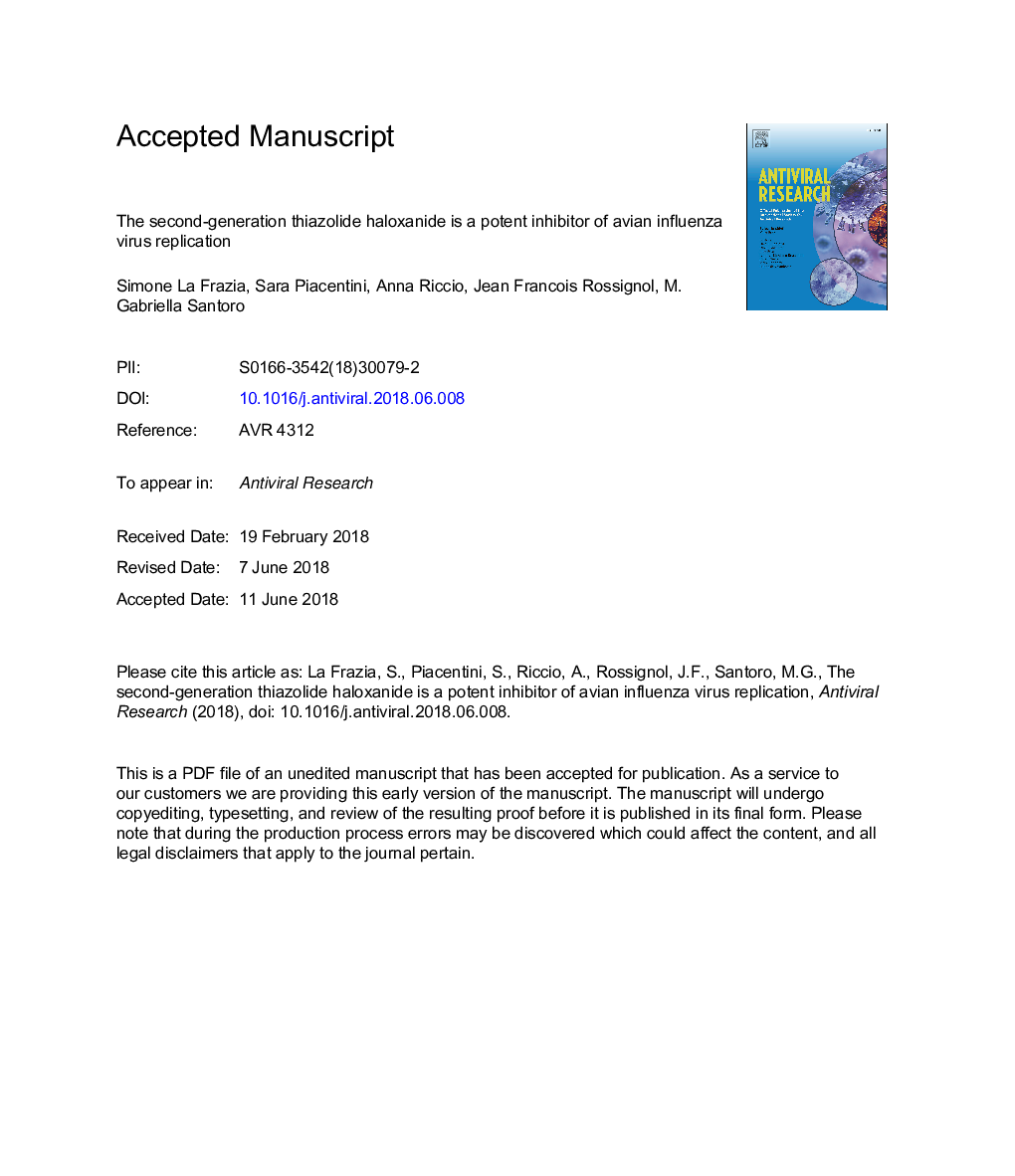| کد مقاله | کد نشریه | سال انتشار | مقاله انگلیسی | نسخه تمام متن |
|---|---|---|---|---|
| 8523039 | 1557786 | 2018 | 44 صفحه PDF | دانلود رایگان |
عنوان انگلیسی مقاله ISI
The second-generation thiazolide haloxanide is a potent inhibitor of avian influenza virus replication
ترجمه فارسی عنوان
نسل دوم هالوکسانید تیازولید یک مهار کننده قوی از تکرار ویروس آنفلوآنزای مرغی است
دانلود مقاله + سفارش ترجمه
دانلود مقاله ISI انگلیسی
رایگان برای ایرانیان
کلمات کلیدی
ضد ویروسی، ویروس های آنفولانزای مرغی، هموگلوتینین، نیازاکسانید، تیازولید،
موضوعات مرتبط
علوم زیستی و بیوفناوری
ایمنی شناسی و میکروب شناسی
ویروس شناسی
چکیده انگلیسی
The emergence of new avian influenza virus (AIV) strains able to infect humans represents a serious threat to global human health. In addition to surveillance and vaccine development, antiviral therapy remains crucial for AIV control; however, the increase in drug-resistant AIV strains underscores the need for novel approaches to anti-influenza chemotherapy. We have previously shown that the thiazolide anti-infective nitazoxanide (NTZ) inhibits influenza A/PuertoRico/8/1934(H1N1) virus replication, and this effect was associated with inhibition of viral hemagglutinin (HA) maturation. Herein we investigated the activity of the second-generation thiazolide haloxanide (HLN) against H5N9, H7N1 and H1N1 AIV infection in vitro, and explored the mechanism of the antiviral action. Using the A/chicken/Italy/9097/1997(H5N9) AIV as a model, we show that HLN and its precursor p-haloxanide are more effective than NTZ against AIV, with IC50 ranging from 0.03 to 0.1â¯Î¼g/ml, and SI ranging from 200 to >700, depending on the multiplicity of infection. Haloxanide did not affect AIV entry into target cells and did not cause a general inhibition of viral protein expression, whereas it acted at post-translational level by inhibiting HA maturation at a stage preceding resistance to endoglycosidase-H digestion. Importantly, this effect was independent of the AIV-HA subtype and the host cell. Immunomicroscopy and receptor-binding studies confirmed that HLN-induced alterations impair AIV-HA trafficking to the host cell plasma membrane, a key step for viral morphogenesis. The results indicate that haloxanide could provide a new tool for treatment of avian influenza virus infections.
ناشر
Database: Elsevier - ScienceDirect (ساینس دایرکت)
Journal: Antiviral Research - Volume 157, September 2018, Pages 159-168
Journal: Antiviral Research - Volume 157, September 2018, Pages 159-168
نویسندگان
Simone La Frazia, Sara Piacentini, Anna Riccio, Jean-Francois Rossignol, M. Gabriella Santoro,
